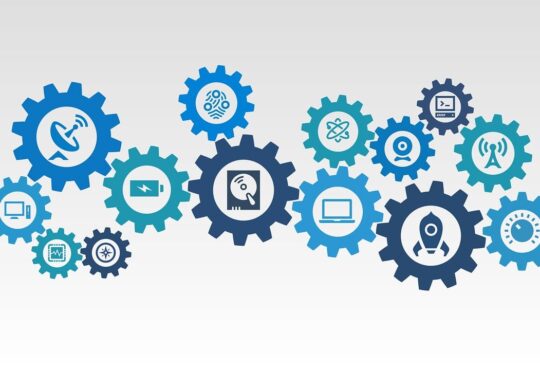
It was an honor to attend and share The Metropolitan Museum of Art’s story with the audience at API Days in Paris. It was in Paris that the idea for creating a museum for art and art education for the people of America first found solid support among a group of visiting Americans. That group would bring that thought back to New York and establish The Metropolitan Museum of Art a few years later. The Met’s mission today to collect, study, conserve, and present significant works of art across all times and cultures to connect people to creativity, knowledge, and ideas brought me to an auditorium of developers to talk about The Met Collection API at API Days.

The Met has over 1.5 million objects but only 4% is on view to the 7 million visitors that come to The Met annually. The Met website features nearly half a million artworks and reaches 30 million unique visitors annually. These are decent reach numbers, but if we are to fulfill our mission to connect people to creativity, knowledge and ideas – if we are to be a museum of the world, about the world and for the world, we need to reach the 4.3 billion internet-connected people on the planet. The best way The Met can do that is through partnerships and platforms. The Met’s Open Access program and The Met Collection API lay a foundation for working with partners and platforms for greater global reach.
In February 2017 The Met launched its Open Access program releasing all of The Met’s public domain images and data under Creative Commons Zero license. It was a milestone in our digital program, but a user still needed to come to The Met site or use an unwieldy CSV file to access the data and images. In October 2019, The Met launched The Met Collection API, taking a foundational step forward in making the Museum’s collection one of the most accessible, discoverable, and useful on the internet.
The Met Collection API is our content pipeline to partnerships and new audiences. The Met can now scale content to its partnerships as well as provide makers, creators, researchers, and dreamers with a connection to the most up-to-date data and images of artworks in The Met collection, representing more than five thousand years of human history.
Details on The Met Collection API.
- The API contains:
- Over 406,000 images of over 205,000 distinct art objects – all under CC0 license from The Met Open Access program – available for use without restriction.
- All Met digitized data is available under CC0 – which is about 470,000 data files of public domain and copyrighted artworks.
- A subject keyword data set which provides subject tags for over 230,000 of the artworks.
- The API has object and department endpoints as well as filters including artist, date, geography, culture and many more. Further filters and enhancements are rolled out periodically.
- The API data is updated every day.
- Over 18,000 art objects have been added annually to our Open Access program in the past few years.
By launching the API The Met has the ability to scale the success of our partnerships, a core component of The Met’s digital program. The benefits of launching our API were immediate, as our long-time partner Google, via Google Arts & Culture, unveiled their integration of our API. We had worked with Google Arts & Culture on various projects over seven years and had only managed to manually upload about 750 images. When we launched the API, we instantly had over 200,000 works accessible to their Google Arts & Culture audience. Not only did this immediately put our collection in context with other collections on their platform, but also having our images there allows us to more easily collaborate on a number of online exhibitions that Google aggregates across their partner collections for artist and movement anniversaries.
The subject keyword data set that is also included in our API has been central to a number of creative collaborations in the past year. While The Met Open Access images have a number of data associated with the art objects, the subject keywords provide a new access point into the collection, allowing users to search for depicted subject matter.
Microsoft approached The Met with an opportunity to experiment with artificial intelligence – to explore what AI could do with our existing data sets as well as our new subject keywords. We used this opportunity to also collaborate with MIT’s Open Learning and Knowledge Futures groups. Including academic thinkers was a natural addition to our effort as well as further commitment to connecting to education. The goal of our collaboration was to use AI, our API, and this new subject keyword data set to explore new ways to connect people to art globally. After a two-day hackathon and then a few weeks of prototype work, we held a reveal event at The Met to share five of our new prototype connections to art. The prototypes included a generative adversarial network (GANs) project, a voice-capture storytellying app that generated artworks (available in ten languages), an app that connected Instagram images and visually similar works of art, an Artwork of the Day app drawing on historical open source data, and an artwork depiction game. While the prototypes were ideas in development, this collaboration was successful in showing us the range of projects that were now accessible with our API.

And, this was just the beginning.
Another team at Microsoft worked with us to create a search proof of concept – called Art Explorer. Using our API and both cognitive and visual search skills, a user starts at an image of George Washington crossing the Delaware and can find connections to a sculpture of Minehaha by the first woman of African-American and Native-American heritage to achieve international fame as a sculptor in the fine arts. This proof of concept also spawned a Bing visual search skill using our API that any developer can access and use today.
Our work with Pinterest was also greatly enhanced by having an API. We have been working with Pinterest for a number of years on a small periodic upload of images to boards. With our API, we were able to upload our very best highlighted artwork images to their sight in one batch (~2000 images). We saw an immediate increase in traffic to our boards as well as added referral traffic back to The Met site. We are now set to periodically upload curated batches of 100 images from filters on our API. This is a huge divergence from uploading 5 images per week, and a great way to engage an audience that has an affinity with creativity.
The Met Collection API has also provided us with a new opportunity to engage with academic pursuits. As a radical shift from art history, we are now working with data science departments and data visualization classes to advise them about our Open Access collection as well as learn from them their new insights and obstacles in using our API and its data sets.
We are currently providing assistance to two Parsons School of Design classes using our API for data visualization studies. We worked with them to kick off their data projects then come back to review their projects at mid-term and at finals. We were overwhelmed with the creativity and breadth of presentations – quantitative studies that showed us where we have missing data or qualitative studies that showed us what is possible. We saw renderings of Buddha faces across geographies, a landscape generator, a hierarchy of arms and armor attributes and a study of artwork dimensions which is rarely provided for uses to get a sense of how large or small an artwork really is. We are also assisting a University of Virginia data science team using our API, and machine learning in assessing bias in AI models. In the realm of professional scholarship, we also collaborated with a team that led a Kaggle competition to develop work in improving image recognition for art.
Creative Commons has also used The Met Collection API to provide Met images as part of their image search. The review here is just some of the API projects we are connected to. In the past several months, we have been involved in many useful and innovative implementations of our API which brings the artworks for The Met to greater audiences in new ways. We want the Museum’s incredible artworks to exist in apps, on platforms, and on websites where people already go to get their doses of creativity and knowledge. We are continuing to listen to our partners and our public feedback to add filters and assess what new data we can add to our API to make our collection the most accessible, discoverable and useful on the Internet.
The Met made progressive steps to put together an Open Access program and an API so that anyone could easily access and remix culture, or create something new from something old. We could not have imagined the many ways our Open Access images and data would be used, but we knew that the API would provide the launch pad for all of these exciting projects. The experience of attending API Days and of sharing the story behind our API has been an honor. Perhaps the ideas shared here will help us continue connections to knowledge, creativity, and ideas for centuries to come.










